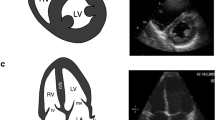Abstract
Background
Inappropriate use of myocardial perfusion imaging (MPI) may vary depending on the training, specialty, or practice location of the clinician.
Methods
We conducted a cross-sectional investigation of consecutive patients who underwent MPI at our Veterans Affairs medical center between December 2010 and July 2011. Characteristics of the MPI ordering clinicians were extracted to investigate any associations with inappropriate use.
Results
582 patients were included, 9.8% were inappropriate. No difference in inappropriate use was observed between cardiology and non-cardiology clinicians (n = 21, 9.5% vs n = 36, 10.0%, P = .83); no difference was noted between nurse practitioners/physician assistants, attending physicians, and housestaff (7.5% vs 11.2% vs 1.8%, P = .06). Comparing inpatient, emergency department and outpatient clinician groups, the difference was null (8.6% vs 6.3% vs 10.1%, P = .75). For most clinician groups, the most common inappropriate indication was an asymptomatic scenario; however, some groups were different: definite acute coronary syndrome for inpatient clinicians and low risk syncope for emergency medicine clinicians.
Conclusions
Clinician groups appear to order inappropriate MPI at similar rates, regardless of their training, specialty, or practice location. Differences in the most common type of inappropriate testing suggest that interventions to reduce inappropriate use should be tailored to specific clinician types.

Similar content being viewed by others
References
Hendel RC, Berman DS, Di Carli MF, Heidenreich PA, Henkin RE, Pellikka PA, et al. ACCF/ASNC/ACR/AHA/ASE/SCCT/SCMR/SNM 2009 appropriate use criteria for cardiac radionuclide imaging: A report of the American College of Cardiology Foundation Appropriate Use Criteria Task Force, the American Society of Nuclear Cardiology, the American College of Radiology, the American Heart Association, the American Society of Echocardiography, the Society of Cardiovascular Computed Tomography, the Society for Cardiovascular Magnetic Resonance, and the Society of Nuclear Medicine. Circulation 2009;119:e561-87.
Tilkemeier P, Green J, Einstein AJ, Fazel R, Reames P, Shaw LJ. The evolving practice of nuclear cardiology: Results from the 2011 ASNC member survey. J Nucl Cardiol 2012;19:1170-5.
Haynes B, Haines A. Barriers and bridges to evidence based clinical practice. Br Med J 1998;317:273-6.
Cabana MD, Rand CS, Powe NR, Wu AW, Wilson MH, Abboud PA, et al. Why don’t physicians follow clinical practice guidelines? A framework for improvement. J Am Med Assoc 1999;282:1458-65.
Nelson KH, Willens HJ, Hendel RC. Utilization of radionuclide myocardial perfusion imaging in two health care systems: Assessment with the 2009 ACCF/ASNC/AHA appropriateness use criteria. J Nucl Cardiol 2012;19:37-42.
Gupta A, Tsiaras SV, Dunsiger SI, Tilkemeier PL. Gender disparity and the appropriateness of myocardial perfusion imaging. J Nucl Cardiol 2011;18:588-94.
Winchester DE, Meral R, Ryals S, Beyth RJ, Shaw LJ. Appropriate use of myocardial perfusion imaging in a veteran population: Profit motives and professional liability concerns. JAMA Intern Med 2013;173:1381-3.
FOCUS Initiative. http://www.cardiosource.org/Science-And-Quality/Quality-Programs/Imaging-in-FOCUS/. Accessed 10 Aug 2012.
Faul F, Erdfelder E, Lang AG, Buchner A. G*Power 3: A flexible statistical power analysis program for the social, behavioral, and biomedical sciences. Behav Res Methods 2007;39:175-91.
von Elm E, Altman DG, Egger M, Pocock SJ, Gotzsche PC, Vandenbroucke JP. The Strengthening the Reporting of Observational Studies in Epidemiology (STROBE) statement: Guidelines for reporting observational studies. PLoS Med 2007;4:e296.
Gibbons RJ, Askew JW, Hodge D, Kaping B, Carryer DJ, Miller T. Appropriate use criteria for stress single-photon emission computed tomography sestamibi studies: A quality improvement project. Circulation 2011;123:499-503.
Willens HJ, Nelson K, Hendel RC. Appropriate use criteria for stress echocardiography: Impact of updated criteria on appropriateness ratings, correlation with pre-authorization guidelines, and effect of temporal trends and an educational initiative on utilization. JACC Cardiovasc Imaging 2013;6:297-309.
Bhatia RS, Milford CE, Picard MH, Weiner RB. An educational intervention reduces the rate of inappropriate echocardiograms on an inpatient medical service. JACC Cardiovasc Imaging 2013;6:545-55.
Grimshaw JM, Shirran L, Thomas R, Mowatt G, Fraser C, Bero L, et al. Changing provider behavior: An overview of systematic reviews of interventions. Med Care 2001;39:II2-45.
Acknowledgments
Ryan Chauffe, DO and Scott Ryals, MD are acknowledged for their participation in gathering of data for this investigation. This investigation was supported by NIH T35 Training Grant: T35-HL007489-28. This work was supported by resources provided by the North Florida/South Georgia Veterans Health System. The views expressed in this article are those of the authors and do not necessarily reflect the position or policy of the Department of Veterans Affairs or the United States government.
Disclosures
Dr. Winchester had full access to the data and accepts responsibility for its integrity.
Author information
Authors and Affiliations
Corresponding author
Rights and permissions
About this article
Cite this article
Winchester, D.E., Hymas, J., Meral, R. et al. Clinician-dependent variations in inappropriate use of myocardial perfusion imaging: Training, specialty, and location. J. Nucl. Cardiol. 21, 598–604 (2014). https://doi.org/10.1007/s12350-014-9887-3
Received:
Accepted:
Published:
Issue Date:
DOI: https://doi.org/10.1007/s12350-014-9887-3




